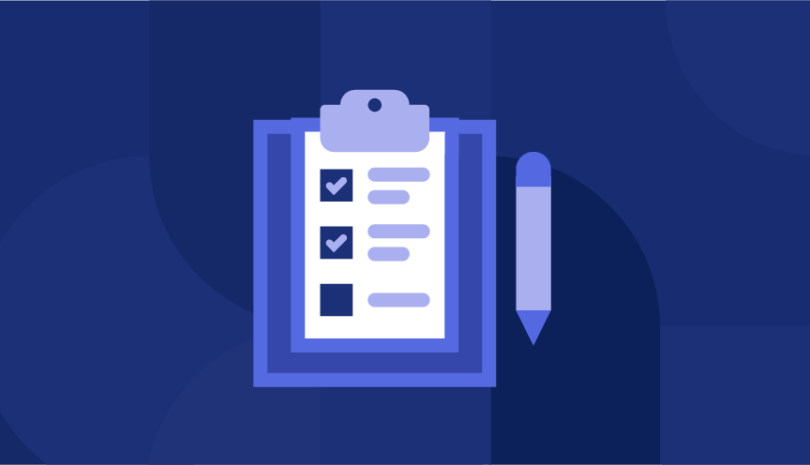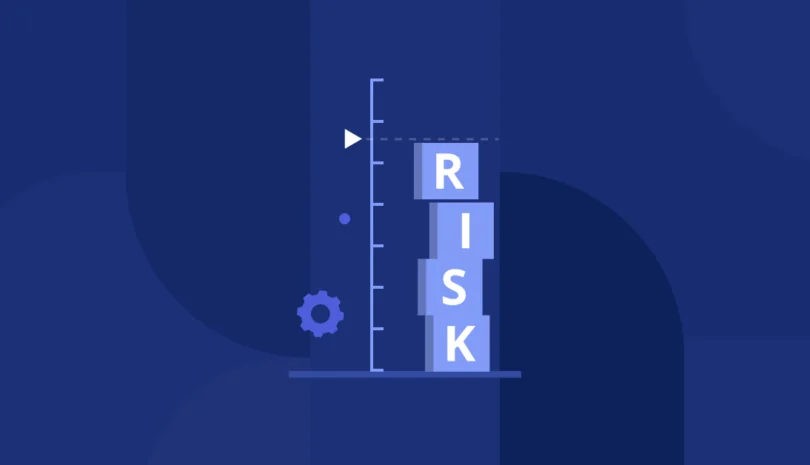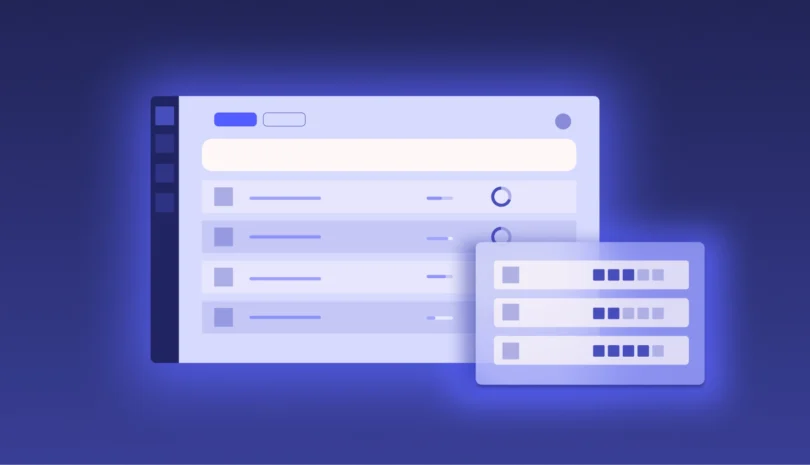Organizations rely on vendor security questionnaires to validate and manage third-party risk, but the process is rarely simple for vendors. Each questionnaire is packed with detailed cybersecurity requirements, and many vendors are asked to complete dozens, sometimes even hundreds, throughout the year. The result is vendor security questionnaire fatigue: a cycle of delays, incomplete responses, and growing frustration on both sides of the relationship.
When vendors are overwhelmed, security teams face slower due diligence, higher error rates, and limited visibility into actual risk exposure. This not only strains vendor relationships but also weakens the overall effectiveness of third-party cyber risk management.
Reducing vendor security questionnaire fatigue isn’t just about efficiency; it’s about enabling better collaboration, accuracy, and trust between organizations and their suppliers. With the right mix of cybersecurity questionnaire management, automation, and streamlined workflows, companies can strengthen their risk programs without burning out their vendors.
What Is Vendor Security Questionnaire Fatigue?
Vendor security questionnaire fatigue happens when vendors are overwhelmed by the constant flood of security questionnaires from their customers. Each questionnaire is designed to assess cybersecurity practices and third-party risk; however, the repetitive and manual nature of the process quickly becomes burdensome. Vendors face many requests, each with slightly different formats and requirements. This creates delays in response, inconsistent answers, and mounting frustration over time.
Instead of focusing on strengthening security, vendors spend hours navigating spreadsheets and portals. The result isn’t only wasted time, but it can also erode customer relationships and delay onboarding. Addressing questionnaire fatigue is critical to maintaining a healthy vendor ecosystem, where risk assessments are both effective and efficient.
Why Cybersecurity Questionnaire Management Is Broken
Traditional questionnaire management remains one of the most frustrating aspects of vendor risk assessments. At its core, the process is outdated, inefficient, and prone to human error. Vendors are routinely asked to complete lengthy, detailed security questionnaires, many of which contain overlapping or identical questions. Because each customer tends to customize their own form, response teams often face dozens of variations of essentially the same request.
The absence of true standardization magnifies this problem. While frameworks like SIG and CAIQ exist to provide structure, many enterprises continue to rely on fully custom forms that differ slightly in wording, format, or emphasis. Vendors must constantly adjust responses to meet these changing expectations, which not only wastes time but also drains valuable resources that could be better spent on improving security practices.
In most cases, the process remains overwhelmingly manual. Teams depend on spreadsheets, copy-pasting from old responses, or searching across multiple documents to piece together answers. This repetition increases the likelihood of mistakes, incomplete information, and inconsistent answers across different customers. Beyond slowing down vendor onboarding, these inefficiencies also reduce the accuracy and reliability of the assessments themselves. Without automation, centralized response libraries, or standardized workflows, questionnaire management will remain a broken process that frustrates vendors and delivers limited value to enterprises.
The Business Impact of Vendor Security Questionnaire Fatigue
Vendor security questionnaire fatigue has consequences far beyond the vendors themselves—it ripples across the entire enterprise ecosystem. When vendors are overwhelmed by constant requests, onboarding timelines slow down dramatically. What should be a straightforward due diligence process often stretches into weeks or months, delaying critical partnerships, projects, or product launches.
The quality of risk assessments also suffers. Fatigued vendors are more likely to rush through responses, provide incomplete information, or make errors in their answers. This undermines the fundamental purpose of questionnaires: providing enterprises with a clear, accurate, and trustworthy view of their third-party’s security posture. Instead of gaining clarity, organizations are left with inconsistent or unreliable data that makes it harder to evaluate risk effectively.
The human element compounds the challenge. Endless back-and-forth exchanges over unclear responses or missing details create frustration on both sides of the relationship. Vendors may view security questionnaires as burdensome hurdles rather than collaborative tools for building trust, which can strain long-term partnerships.
Over time, the costs add up. Enterprises risk missed opportunities due to onboarding delays, higher operational expenses from inefficient processes, and increased exposure to risks that remain hidden in incomplete assessments. Addressing questionnaire fatigue is therefore not simply about convenience—it is about building a scalable, resilient third-party risk management program. Reducing fatigue leads to faster vendor onboarding, higher-quality data, stronger collaboration, and ultimately a more secure supply chain.
How Vendor Response Automation Changes the Game
Vendor response automation transforms how organizations handle security questionnaires. Instead of relying on manual, repetitive work, automation leverages past responses, frameworks, and AI to dramatically speed up the process. Vendors can pre-populate answers from their existing library of completed questionnaires, ensuring consistency and accuracy across customers. Framework mapping takes it a step further, and responses can be automatically aligned with standards like ISO, SOC 2, NIST, and GDPR, reducing duplication of effort.
AI assistance helps fill in gaps, flag inconsistencies, and guide vendors toward more complete answers. The result is faster turnaround, fewer errors, and less time wasted on copy-paste tasks. For example, one vendor cut their response time from several weeks down to just a few days after implementing automated questionnaire tools. By eliminating fatigue and improving efficiency, automation doesn’t just benefit vendors; it accelerates onboarding and strengthens risk assessments for enterprises as well.
The Role of Automated Vendor Questionnaires in TPCRM
Vendor security questionnaires don’t need to be a burden. With automated tools, enterprises can streamline the process for themselves and their vendors. AI-driven dynamic questionnaires adjust in real time, asking only the most relevant questions based on the vendor’s risk profile. This risk-based tailoring reduces unnecessary back-and-forth and helps low-risk vendors avoid lengthy forms altogether. By integrating automated questionnaires directly into third-party cyber risk management (TPCRM) platforms, security teams can align assessments with ongoing monitoring. The result: faster insights, less fatigue for vendors, and a more accurate view of supply chain security without sacrificing diligence.
Best Practices for Reducing Vendor Security Questionnaire Fatigue
Organizations can ease the strain on vendors and themselves by adopting a smarter, more collaborative approach to questionnaires. First, standardize the process by using industry-recognized templates like SIG or CAIQ, instead of custom forms for each request. Second, break down silos by sharing completed questionnaires across departments to prevent duplication. Third, leverage automation platforms that allow vendors to pre-populate answers, map responses to compliance frameworks, and update security data seamlessly. Finally, treat vendors as long-term partners.
Building trust and showing flexibility in the process not only reduces questionnaire fatigue but also strengthens vendor-enterprise relationships. By combining standardization, collaboration, and automation, organizations create a more efficient, accurate, and vendor-friendly risk management program.
Vendor Security Questionnaire Fatigue Solutions
Solving vendor security questionnaire fatigue is a win-win. For enterprises, it means faster, more accurate risk assessments and stronger supply chain security. For vendors, it reduces the burden of repetitive manual responses, freeing up resources for actual security improvements instead of endless paperwork.
The key lies in smarter management. Automation eliminates unnecessary duplication, ensures consistency, and adapts questions to the vendor’s actual risk level. By embracing standardized templates, ongoing monitoring, and AI-driven tools, organizations can transform what was once a painful process into a strategic advantage. The result: less friction, improved collaboration, and a stronger overall cybersecurity posture.
Ready to reimagine your questionnaire process? Book a personalized demo to see how Panorays turns vendor cybersecurity questionnaires into a seamless, automated experience, reducing fatigue and driving real resilience across your supply chain.
Vendor Security Questionnaire Fatigue FAQs
-
When vendors experience fatigue, their responses often become slower, less detailed, or error-prone. This creates delays in risk assessments, which in turn postpone vendor onboarding and project timelines. Enterprises are left with incomplete or inconsistent information, reducing visibility into potential third-party risks. Over time, these gaps can compromise the quality of due diligence and weaken the organization’s ability to make confident, risk-based decisions.
-
Ignoring vendor fatigue doesn’t just frustrate suppliers—it introduces real business risks. Fatigue can damage long-term vendor relationships, create compliance gaps, and lower the accuracy of questionnaire data. Inaccurate or incomplete answers undermine the purpose of assessments and can leave organizations exposed to hidden vulnerabilities. Ultimately, ignoring fatigue weakens the enterprise’s overall risk posture and resilience.
-
Companies can ease the strain by standardizing on widely accepted frameworks like SIG or CAIQ, which reduce redundant questions across assessments. Sharing completed questionnaires across internal departments also avoids duplication of effort. Beyond process improvements, adopting automation platforms allows vendors to reuse validated answers, pre-populate responses, and align data with compliance frameworks. Just as importantly, treating vendors as partners—rather than simply data providers—helps build trust and encourages more accurate, timely responses.
-
Automation introduces smarter, dynamic questionnaires that adjust based on a vendor’s risk profile. Instead of overwhelming vendors with lengthy, repetitive forms, automated tools ask only the most relevant questions. These platforms reduce manual entry, prevent copy-paste errors, and integrate responses with ongoing monitoring. This not only reduces vendor fatigue but also provides enterprises with higher-quality, standardized data.
-
Addressing fatigue accelerates vendor onboarding, strengthens vendor relationships, and improves the accuracy of security assessments. Ultimately, enterprises gain clearer visibility into risk, vendors save time, and both sides can focus more on building stronger cybersecurity practices rather than managing paperwork.



